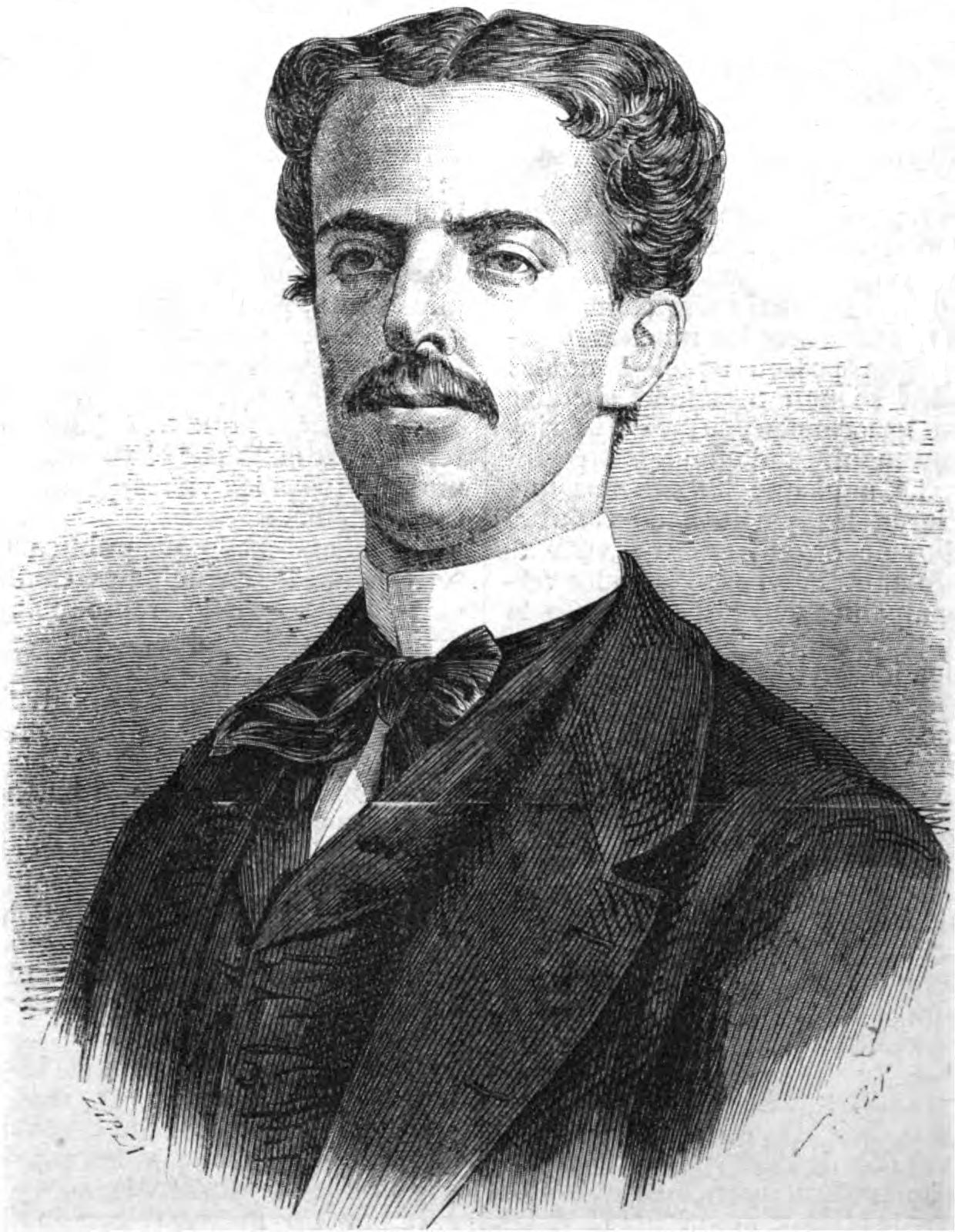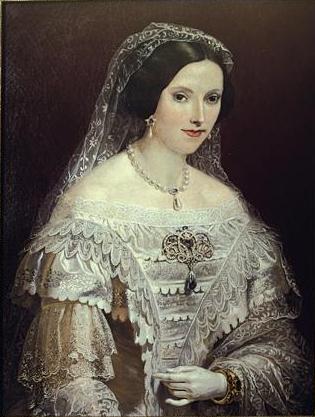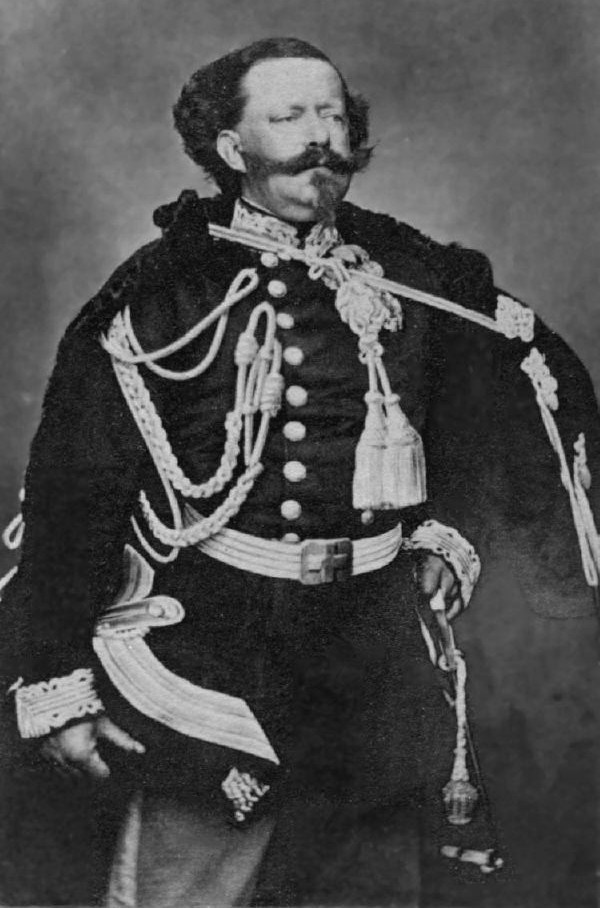|
Amedeo I Of Spain
Amadeo ( it, Amedeo , sometimes latinized as Amadeus; full name: ''Amedeo Ferdinando Maria di Savoia''; 30 May 184518 January 1890) was an Italian prince who reigned as King of Spain from 1870 to 1873. The first and only King of Spain to come from the House of Savoy, he was the second son of Victor Emmanuel II of Italy and was known for most of his life as the Duke of Aosta, the usual title for a second son in the Savoyard dynasty. He was elected by the Cortes Generales as Spain's monarch in 1870, following the deposition of Isabel II, and was sworn in the following year. Amadeo's reign was fraught with growing republicanism, Carlist rebellions in the north, and the Ten Years' War, Cuban independence movement. After three tumultuous years in the throne, he abdicated and returned to Italy in 1873, and the First Spanish Republic was declared as a result. He founded the Aosta branch of Italy's royal House of Savoy, which is junior in patrilineality, agnatic descent to the branch des ... [...More Info...] [...Related Items...] OR: [Wikipedia] [Google] [Baidu] |
Duke Of Aosta
Duke of Aosta ( it, Duca d'Aosta; french: Duc d'Aoste) was a title in the Italian nobility. It was established in the 13th century when Frederick II, Holy Roman Emperor, made the County of Aosta a duchy. The region was part of the Savoyard state and the title was granted to various princes of the House of Savoy, second sons of the reigning king of Sardinia or king of Italy. The title was re-created in 1845 for Amadeo I of Spain, Prince Amadeo, son of Victor Emmanuel II, and thereafter held by him and his descendants until the abolition of the Italian monarchy in 1946. Two holders briefly served as kings of European countries – Prince Amadeo ruled as king of Spain from 1870 to 1873, while his grandson Prince Aimone, Duke of Aosta, Prince Aimone was titular king of Croatia from 1941 to 1943 during the Italian-backed fascist regime. The subsidiary titles of the Duke of Aosta were Prince della Cisterna and of Belriguardo, Marquess of Voghera, and Count of Ponderano, originating f ... [...More Info...] [...Related Items...] OR: [Wikipedia] [Google] [Baidu] |
Kingdom Of Italy
The Kingdom of Italy ( it, Regno d'Italia) was a state that existed from 1861, when Victor Emmanuel II of Kingdom of Sardinia, Sardinia was proclamation of the Kingdom of Italy, proclaimed King of Italy, until 1946, when civil discontent led to an 1946 Italian institutional referendum, institutional referendum to abandon the monarchy and form the modern Italy, Italian Republic. The state resulted from a decades-long process, the ''Italian unification, Risorgimento'', of consolidating the different states of the Italian Peninsula into a single state. That process was influenced by the House of Savoy, Savoy-led Kingdom of Sardinia, which can be considered Italy's legal Succession of states, predecessor state. Italy Third Italian War of Independence, declared war on Austrian Empire, Austria in alliance with Kingdom of Prussia, Prussia in 1866 and received the region of Veneto following their victory. Italian troops Capture of Rome, entered Rome in 1870, ending Papal States, more tha ... [...More Info...] [...Related Items...] OR: [Wikipedia] [Google] [Baidu] |
Cortes Generales
The Cortes Generales (; en, Spanish Parliament, lit=General Courts) are the bicameral legislative chambers of Spain, consisting of the Congress of Deputies (the lower house), and the Senate (the upper house). The Congress of Deputies meets in the Palacio de las Cortes. The Senate meets in the Palacio del Senado. Both are in Madrid. The Cortes are elected through universal, free, equal, direct and secret suffrage, with the exception of some senatorial seats, which are elected indirectly by the legislatures of the autonomous communities. The Cortes Generales are composed of 615 members: 350 Deputies and 265 Senators. The members of the Cortes Generales serve four-year terms, and they are representatives of the Spanish people. In both chambers, the seats are divided by constituencies that correspond with the fifty provinces of Spain, plus Ceuta and Melilla. However, the Canary and Balearic islands form different constituencies in the Senate. As a parliamentary system, the C ... [...More Info...] [...Related Items...] OR: [Wikipedia] [Google] [Baidu] |
King Of Spain
, coatofarms = File:Coat_of_Arms_of_Spanish_Monarch.svg , coatofarms_article = Coat of arms of the King of Spain , image = Felipe_VI_in_2020_(cropped).jpg , incumbent = Felipe VI , incumbentsince = 19 June 2014 , his/her = His , heir_presumptive = Leonor, Princess of Asturias , first_monarch = Isabella I of Castile and Ferdinand II of Aragon (Catholic Monarchs of Spain) , date = , appointer = Hereditary , residence = Royal Palace of Madrid (official)Palace of Zarzuela (private) , website The Spanish Monarchy The monarchy of Spain or Spanish monarchy ( es, Monarquía Española), constitutionally referred to as The Crown ( es, La Corona), is a constitutional political institution, institution and the highest office of Spain. The monarchy comprises the reigning List of Spanish monarchs, monarch, his or her family, and the Royal Household of Spain, royal household organizat ... [...More Info...] [...Related Items...] OR: [Wikipedia] [Google] [Baidu] |
Roman Catholicism
The Catholic Church, also known as the Roman Catholic Church, is the List of Christian denominations by number of members, largest Christian church, with 1.3 billion baptized Catholics Catholic Church by country, worldwide . It is among the world's oldest and largest international institutions, and has played a prominent role in the history and development of Western civilization.Gerald O'Collins, O'Collins, p. v (preface). The church consists of 24 Catholic particular churches and liturgical rites#Churches, ''sui iuris'' churches, including the Latin Church and 23 Eastern Catholic Churches, which comprise almost 3,500 dioceses and Eparchy, eparchies located List of Catholic dioceses (structured view), around the world. The pope, who is the bishop of Rome, is the Papal supremacy, chief pastor of the church. The bishopric of Rome, known as the Holy See, is the central governing authority of the church. The administrative body of the Holy See, the Roman Curia, has its pr ... [...More Info...] [...Related Items...] OR: [Wikipedia] [Google] [Baidu] |
Adelaide Of Austria
Adelaide of Austria (Adelheid Franziska Marie Rainera Elisabeth Clotilde; 3 June 1822 – 20 January 1855) was Queen of Sardinia by marriage to Victor Emmanuel II of Sardinia, future King of Italy, from 1849 until 1855 when she died as a result of gastroenteritis. She was the mother of Umberto I of Italy. Biography Archduchess of Austria She was born at the Royal Palace of Milan to Archduke Rainer of Austria and his wife Princess Elisabeth of Savoy.Urban. Sylvanius: ''The Gentleman's Magazine'', 1855, p 303 Named ''Adelaide'', or known as ''Adele'' in the family, she held the title of Archduchess of Austria. Her father was the Viceroy of Lombardy-Venetia. Duchess of Savoy On 12 April 1842, at the Palazzina di Caccia di Stupinigi, she married Victor Emmanuel of Savoy. The marriage was used to cement relations between the House of Savoy and that of the House of Habsburg but was viewed by many people of the time to increase Austrian power in Italy. Victor Emmanuel was her ... [...More Info...] [...Related Items...] OR: [Wikipedia] [Google] [Baidu] |
Victor Emmanuel II Of Italy
en, Victor Emmanuel Maria Albert Eugene Ferdinand Thomas , house = Savoy , father = Charles Albert of Sardinia , mother = Maria Theresa of Austria , religion = Roman Catholicism , image_size = 252px , succession1 = King of Sardinia and Duke of Savoy , reign1 = 23 March 1849 – 17 March 1861 , predecessor1 = Charles Albert , reg-type1 = , regent1 = , signature = Signatur Viktor Emanuel II..PNG Victor Emmanuel II ( it, Vittorio Emanuele II; full name: ''Vittorio Emanuele Maria Alberto Eugenio Ferdinando Tommaso di Savoia''; 14 March 1820 – 9 January 1878) was King of Sardinia from 1849 until 17 March 1861, when he assumed the title of King of Italy and became the first king of an independent, united Italy since the 6th century, a title he held until his death in 1878. Borrowing from the old Latin title ''Pater Patriae'' of the Roman emperors, the Italians gave him the epithet of '' Father of the Fatherland'' ( it, Padr ... [...More Info...] [...Related Items...] OR: [Wikipedia] [Google] [Baidu] |
House Of Savoy
The House of Savoy ( it, Casa Savoia) was a royal dynasty that was established in 1003 in the historical Savoy region. Through gradual expansion, the family grew in power from ruling a small Alpine county north-west of Italy to absolute rule of the Kingdom of Sicily from 1713 to 1720, when they were handed the island of Sardinia, over which they would exercise direct rule from then onward. Through its junior branch of Savoy-Carignano, the House of Savoy led the Italian unification in 1860 and ruled the Kingdom of Italy until 1946; they also briefly ruled the Kingdom of Spain in the 19th century. The Savoyard kings of Italy were Victor Emmanuel II, Umberto I, Victor Emmanuel III, and Umberto II. The last monarch reigned for a few weeks before being deposed following the institutional referendum of 1946, after which the Italian Republic was proclaimed. History The name derives from the historical region of Savoy in the Alpine region between what is now France and Italy. Over ti ... [...More Info...] [...Related Items...] OR: [Wikipedia] [Google] [Baidu] |
Prince Umberto, Count Of Salemi
Prince Umberto of Savoy (22 June 1889 – 19 October 1918) was a member of the Aosta branch of the House of Savoy and was styled the Count of Salemi. Early life Umberto was born in Turin, the fourth son of Prince Amadeo of Savoy, Duke of Aosta, the only one by his second wife and niece Princess Maria Letizia Bonaparte (1866–1926) the daughter of Prince Napoléon and Princess Maria Clotilde of Savoy. His father, a former king of Spain, died when he was just a year old. He had three older half-brothers: the Duke of Aosta, the Count of Turin and the Duke of the Abruzzi. In 1908 Umberto began studies at the Naval Academy in Livorno. In May 1911, while still at the academy, he was accused of theft. His cousin King Victor Emmanuel III of Italy wanted him arrested, but his mother took him to Turin and challenged the king to carry out the arrest. In July Victor Emmanuel ordered that he be detained at the Castle of Moncalieri and then spend eighteen months aboard a man-of-war, du ... [...More Info...] [...Related Items...] OR: [Wikipedia] [Google] [Baidu] |
Prince Luigi Amedeo, Duke Of The Abruzzi
Prince Luigi Amedeo, Duke of the Abruzzi, (29 January 1873 – 18 March 1933) was an Italian mountaineer and explorer, briefly Infante of Spain as son of Amadeo I of Spain, member of the royal House of Savoy and cousin of the Italian King Victor Emmanuel III. He is known for his Arctic explorations and for his mountaineering expeditions, particularly to Mount Saint Elias and K2. He also served as an Italian admiral during World War I. He created Villaggio Duca degli Abruzzi in Italian Somalia during his last years of life. Early years He was born in Madrid, Spain as the third oldest son of Prince Amadeo of Savoy, Duke of Aosta and his first wife Donna Maria Vittoria dal Pozzo della Cisterna. Prince Luigi Amedeo was a grandson of King Vittorio Emanuele II of Italy. He was born during his father's brief reign as King Amadeo of Spain. His siblings are Prince Emanuele Filiberto, Prince Vittorio Emanuele, and Prince Umberto. Shortly after his birth, his father, who had re ... [...More Info...] [...Related Items...] OR: [Wikipedia] [Google] [Baidu] |
Prince Vittorio Emanuele, Count Of Turin
Prince Vittorio Emanuele of Savoy-Aosta, Infante of Spain, Count of Turin (24 November 1870 – 10 October 1946) was a grandchild of King Victor Emmanuel II and a member of the House of Savoy. He was a cousin of Victor Emmanuel III. Early life Vittorio Emanuele was born in Turin just before his father Prince Amadeo of Savoy, Duke of Aosta was about to leave for Spain where he had been elected king. His mother was Maria Vittoria del Pozzo della Cisterna. With his father's accession to the Spanish throne he gained the additional title Infante of Spain. The duel In 1897 Vittorio Emanuele challenged Prince Henri of Orléans to a duel, after Henri described, in several articles in the newspaper ''Le Figaro'', the Italian soldiers being held captive in Ethiopia during the First Italo–Ethiopian War as cowards. The dispute was widely echoed in Italy and Europe. It was agreed on the use of the sword as weapon of choice, as the Italians thought duels with pistols, favored by the Fre ... [...More Info...] [...Related Items...] OR: [Wikipedia] [Google] [Baidu] |
Prince Emanuele Filiberto, Duke Of Aosta (1869–1931)
Prince Emanuele Filiberto Vittorio Eugenio Alberto Genova Giuseppe Maria di Savoia, 2nd Duke of Aosta ( Spanish: ''Manuel Filiberto''; 13 January 1869 – 4 July 1931) was an Italian general and member of the House of Savoy, as the son of Amadeo I, and was also a cousin of Victor Emmanuel III of Italy. Filiberto was also commander of the Italian Third Army during World War I, which earned him the title of the "Undefeated Duke". After the war he became a Marshal of Italy. Biography He was born in Genoa, the eldest son of Prince Amadeo of Savoy, Duke of Aosta (second son of King Vittorio Emanuele II) and his first wife Donna Maria Vittoria dal Pozzo della Cisterna. In 1870, Amadeo was elected King of Spain, but abdicated and returned to Italy in 1873. Amadeo died in 1890, and Emanuele Filiberto succeeded as Duke of Aosta. He began his career in the Italian Army at Naples, in 1905, as commander. During World War I, he commanded the Italian Third Army, which gained the nickname ... [...More Info...] [...Related Items...] OR: [Wikipedia] [Google] [Baidu] |




.jpg)



